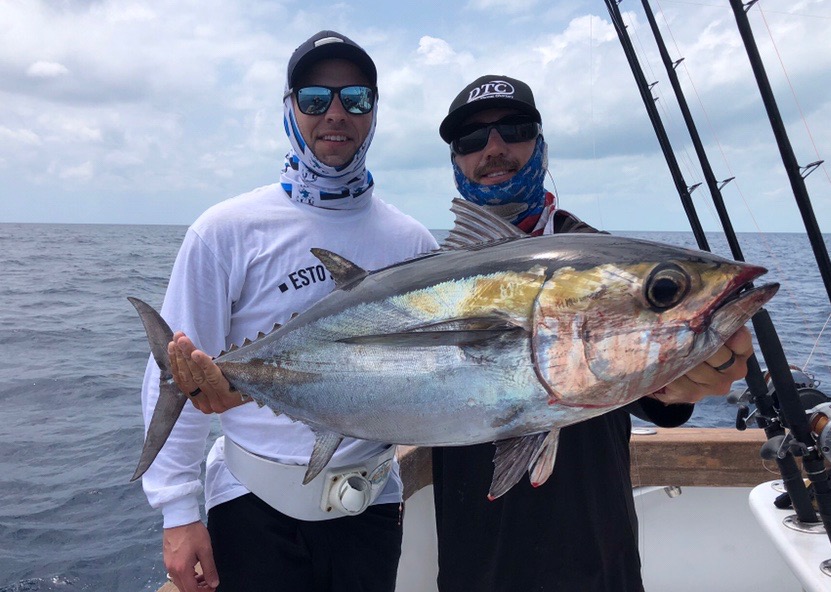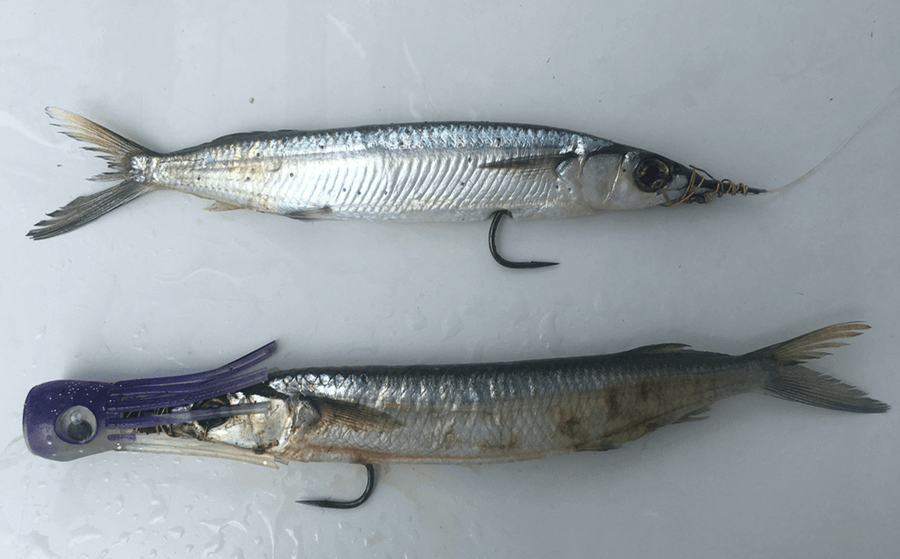Blackfin Tuna Fishing Basics
How to Catch Blackfin Tuna

When:
As spring arrives in south Florida, anglers gear up to target big blackfin tuna. Blackfin tuna are known for their explosive bites, hard runs, and great table fare. Blackfin tuna can be caught most of the year off Miami, but the larger 20-35 lb fish are caught during the spring migration. Thanks to advancements in tagging equipment and the research efforts geared towards conservation, we’ve learned a great deal about this species in recent years. Tuna are typically low light feeders, spending the majority of the time down deep hunting squid. Their large eyes are well equipped to hunting in low light conditions. The data from satellite tags has shown how they migrate vertically through the water column throughout the day to feed. Early morning and late afternoon are the best time to target them near the surface.
Where:
Locating blackfin tuna can be challenging because of their wide range and migratory habits. Areas with bottom topography such as large underwater mounds or humps can provide upwellings of nutrients that attract smaller forage for tunas. The same goes for shipwrecks. Often times we will mark schools of tuna holding in these areas on the fish finder. Currents rips are another excellent location to look for tunas. During spring, we’re typically kite fishing in depths between 80-250 feet. This area over the reef is where we catch the majority of the larger size blackfin tuna. It’s not uncommon to see schools of smaller blackfins busting on baits further offshore. Often times large flocks of birds will follow the schools looking to intercept the flying fish and other forage that the tunas are feeding on.
How:
The best ways to target blackfin tuna are trolling, live baiting, chunking, and vertical jigging. It’s a good idea to scale down your leader material and hooks because of the tuna’s excellent eyesight. We prefer to target the blackfins off Miami by kite fishing on the reef during the spring. It’s the stealthiest presentation, and we still scale down our leaders to 30# fluorocarbon and use smaller circle hooks. A 5/0-6/0 size circle hook works the best. Additionally, using live chum (typically pilchards) we can attract and raise tunas to eat on the surface, and lure them to the boat.
When trolling to locate tuna schools, we typically run the lures at 6-9 kts and much further back than our typical troll spread. Blackfins are far more boat shy than mahi for instance, so our troll spread will be a minimum of 50 yards behind the boat. After an initial hookup on the troll, keep the boat in gear and often times you'll hook additional fish from the school.
Vertical jigging is an excellent technique to target the tunas which may be deeper than 200 feet during mid day. If you’re not familiar with the technique, you need to learn it!
What:
The number one bait for tunas is live bait. Fished from the kite or flat line, a fresh live bait like a sardine, herring, goggle eye or pilchard will outproduce lures, chunks or jigs. Trolling lures include small feathers, cedar plugs and ballyhoo rigs. A small feather in the 3-6” range rigged with a flashy skirt can be deadly for small tunas. The “green machine” is a proven and reliable skirted lure to catch a wide range of tuna species. The same goes for the cedar plug, even though it’s not as flashy or eye catching as some of the modern lures on the market. Ballyhoo rigged either naked or with a illander skirt are another excellent choice for trolling.

Click here to read more info about blackfin tuna on our species profile page.
‹ Back












Comments